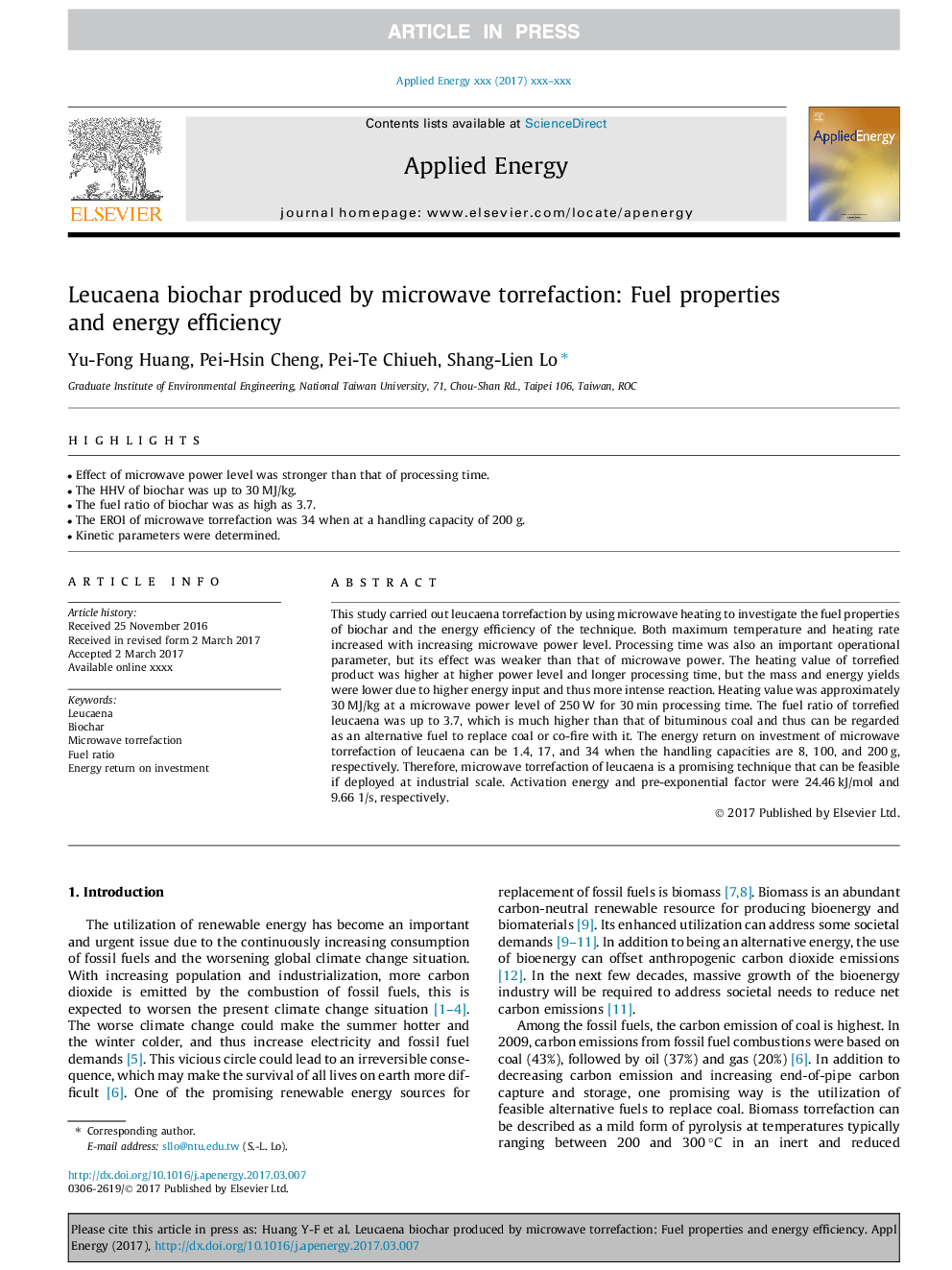| Article ID | Journal | Published Year | Pages | File Type |
|---|---|---|---|---|
| 4916112 | Applied Energy | 2017 | 8 Pages |
Abstract
This study carried out leucaena torrefaction by using microwave heating to investigate the fuel properties of biochar and the energy efficiency of the technique. Both maximum temperature and heating rate increased with increasing microwave power level. Processing time was also an important operational parameter, but its effect was weaker than that of microwave power. The heating value of torrefied product was higher at higher power level and longer processing time, but the mass and energy yields were lower due to higher energy input and thus more intense reaction. Heating value was approximately 30Â MJ/kg at a microwave power level of 250Â W for 30Â min processing time. The fuel ratio of torrefied leucaena was up to 3.7, which is much higher than that of bituminous coal and thus can be regarded as an alternative fuel to replace coal or co-fire with it. The energy return on investment of microwave torrefaction of leucaena can be 1.4, 17, and 34 when the handling capacities are 8, 100, and 200Â g, respectively. Therefore, microwave torrefaction of leucaena is a promising technique that can be feasible if deployed at industrial scale. Activation energy and pre-exponential factor were 24.46Â kJ/mol and 9.66Â 1/s, respectively.
Related Topics
Physical Sciences and Engineering
Energy
Energy Engineering and Power Technology
Authors
Yu-Fong Huang, Pei-Hsin Cheng, Pei-Te Chiueh, Shang-Lien Lo,
